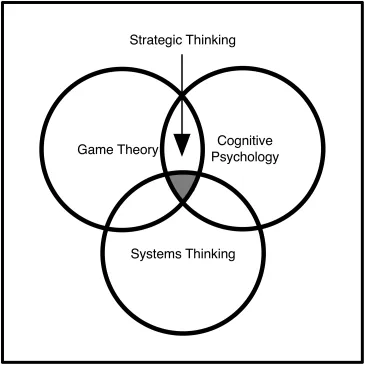
Leading with Strategic Thinking
Four Ways Effective Leaders Gain Insight, Drive Change, and Get Results
- English
- ePUB (mobile friendly)
- Available on iOS & Android
Leading with Strategic Thinking
Four Ways Effective Leaders Gain Insight, Drive Change, and Get Results
About this book
Be a more effective leader with strategic thinking
Leading with Strategic Thinking reveals what effective leaders do differently. Eschewing the one-size-fits-all leadership model, this helpful guide outlines four general leadership types and demonstrates how each type achieves success – whether through personal vision, structured process, collaboration, or by empowering others. The authors identify the actions and skills that distinguish strategic leadership, drawn from interviews and focus groups with over three hundred leaders from around the world. Examples and case studies illustrate these concepts in action, and the provided reference materials steer readers toward more advanced information on this important topic.
The disruptive forces of technology and globalization raise new challenges for leaders. This book is a manual that will help executives and aspiring leaders harness these forces and address the two central questions of strategic leadership:
- How do the best leaders develop their strategy?
- How do effective leaders drive strategic change?
Becoming a strategic leader isn't about mimicking an icon. The most effective leaders seize opportunity in a way that consciously integrates environmental requirements, stakeholder expectations, and personal ability. Leading with Strategic Thinking shows what these leaders do, and gives anyone the tools to be a more strategic leader.
Frequently asked questions
- Essential is ideal for learners and professionals who enjoy exploring a wide range of subjects. Access the Essential Library with 800,000+ trusted titles and best-sellers across business, personal growth, and the humanities. Includes unlimited reading time and Standard Read Aloud voice.
- Complete: Perfect for advanced learners and researchers needing full, unrestricted access. Unlock 1.4M+ books across hundreds of subjects, including academic and specialized titles. The Complete Plan also includes advanced features like Premium Read Aloud and Research Assistant.
Please note we cannot support devices running on iOS 13 and Android 7 or earlier. Learn more about using the app.
Information
1
Fundamentals of Strategic Thinking and Leadership
The Nature of Strategic Thinking

Cognitive Psychology
Types of Discovery
- When did the crash occur?
- How far from the departure airport was the crash?
- How far from the arrival airport was the crash?
- Did the pilots declare an emergency prior to the crash?
- Were there any eyewitnesses to the crash?
- If there were eyewitnesses, what did they see?
- Was anyone on the ground injured or killed?
- Did the pilots deviate from the flight plan prior to the crash?
- Did the airplane strike a mountain or another airplane?
- Were there any survivors?
- What type of material was the transport airplane carrying?
- What is the safety record of the company owning the airplane?
- What was the safety record of the flight crew?
- Who manufactured the airplane?
- What is the safety record of airplanes built by this particular manufacturer?
- How do all of the above compare to other airplanes, flight crews, and airplane manufacturers?
- How do all of the above compare to equipment, operators, and manufacturers in other industries?
The Role of Cognitive Ability
Nothing has been said about ability, or abilities. What shall we say of energy, of combinatorial zest, of intelligence, of alertness, of perseverance? I shall say nothing about them. They are obviously important but, from a deeper point of view, they are also trivial. For at any level of energy or intelligence there can be more or less of creating in our sense. Stupid people create for each other as well as benefiting from what comes from afar. So too do slothful and torpid people. I have been speaking of creativity, not of genius.3
- The ability to recognize and take advantage of personal strengths and mitigate personal weaknesses,
- Comfort with and ability to understand complexity,
- The ability to recognize related concepts and principles,
- Self-confidence and belief in oneself,
- Comfort with ambiguity and uncertainty,
- A willingness to take risks,
- The courage of conviction,
- The willingness to draw conclusions and make decisions, and
- Personal assertiveness.
- Preparation:Becoming familiar with existing works, what has been done, how challenges are typically addressed, and how opportunities are typically seized.
- Incubation:Allocating time to the creative process, such that ideas and thoughts combine and awareness and understanding materialize.
- Insight:Combining existing concepts, principles, frameworks, and models to form new relationships, combinations, associations, or structures.
- Verification:Assessing and elaborating on new ideas to determine whether they are likely to be brought to fruition and molded into a complete product.
Types of Thought Processes
Table of contents
- Cover
- Praise for Leading with Strategic Thinking
- Title Page
- Copyright
- Dedication
- Foreword
- Preface
- Introduction
- Chapter 1: Fundamentals of Strategic Thinking and Leadership
- Chapter 2: The Four Types of Strategic Leadership
- Chapter 3: Examples of Strategic Leadership
- Chapter 4: Applying Strategic Leadership
- Chapter 5: Garnering Buy-in, Commitment, and Advocacy
- Chapter 6: Developing Strategic Leadership
- Resources
- References
- About the Authors
- Index
- End User License Agreement